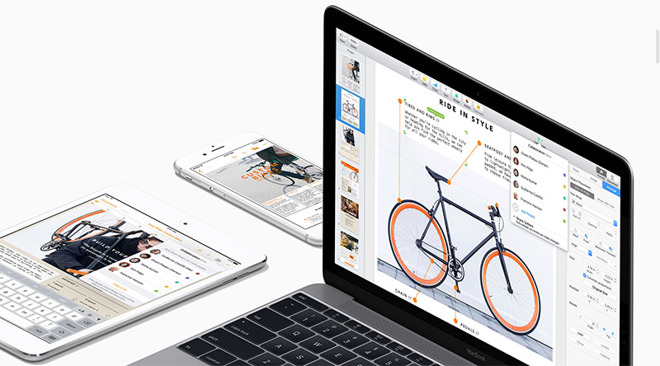Long-term Windows users looking to dip their toe into the Mac ecosystem for the first time typically stick to applications they are familiar with on PC, but there is a wealth of other software that can do the job for the more ambitious switcher.

Productivity
Existing users of Microsoft's Office suite of tools will immediately feel comfortable with the Office 365 subscription, as the apps offer almost identical functionality to the Windows versions. Many people who use the suite frequently may not want to move away from it, but for those who do, there are options.
The first alternative is in fact already installed on the Mac by Apple itself: iWork. Apple's own collection of apps cover the core areas Office is typically used for, with Pages, Numbers and Keynote standing in for Word, Excel, and Powerpoint, respectively.
At face value, Pages is a powerful word processor that seasoned Word users will quickly understand and can immediately start working within. Once a piece is crafted, Pages shows off its true value by incorporating the text into dozens of fantastic templates that makes an article or letter stand out.
While many are wary of working in spreadsheets in the first place —Excel is simply a mass of black and white digits —Numbers goes to great lengths to change that image. The selection of templates are colorful and easy to understand, making them far less intimidating to start using, while the overall interface makes starting from even the basic pages simpler than most would expect.
Almost everyone who has sat in an office has had to endure a Powerpoint presentation, inevitably poorly produced with too many transitions and little in the way of visual appeal. Keynote, on the other hand, helps users create appealing and more professional presentations, again with easy to use themes and transitions between slides.
Add in the ability to collaborate with others, cross-platform compatibility with PCs via iWork for iCloud, and the same tools being available as iOS apps, and iWork becomes serious competition.
If the switcher would rather have something that resembles Microsoft's suite more in terms of appearance. , another way to go could be through OpenOffice and LibreOffice, the latter being a fork of the former open-source project. There is little difference between the two releases, as both are similar in terms of what they offer to users, including tools for word processing, spreadsheets, and databases, and while the OpenDocument Format is favored, they have no issue opening Office files.
These two are less of a recommendation based on their ability to be used on the Mac, and more one of overall ubiquity. The two projects are available to download for Mac, Windows, and for Linux, allowing for the exact same working environment to exist on multiple platforms. It also helps that OpenOffice and LibreOffice are free tools, unlike Office.
Image Editing
Adobe Creative Cloud could easily be considered the Microsoft Office for art, design, and video. Just like Office, Adobe makes its suite of apps available for the Mac, so there isn't anything to worry creative professionals making the switch. Even so, there are still a few Mac alternatives to individual components for those wanting to go further afield.
No comments :
Post a Comment